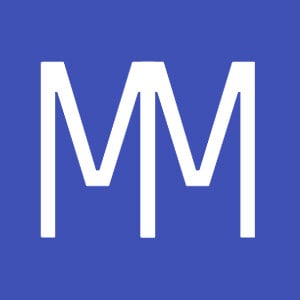
An overdrive pedal is a type of guitar effect pedal, which is used to produce an "overdriven" sound. This means that the device produces a distorted signal that emulates the sound of an overdriven amplifier. The best overdrive pedal for guitar are those that are versatile and provide clean boost functionality.
The essence of the overdrive is to emulate the sound of a tube amplifier pushed into distortion. This can be done through analog circuitry. Or by digitally modeling the process inside a computer system using digital signal processing (DSP). Some pedals can emulate both analog and digital distortion for versatility in tone shaping. While some also offer more unique sounds like octave dividers or fuzztones.
Overdrive pedals are among the most common effects used by guitarists. They provide a natural, tube-like distortion.
The overdrive pedal is an effect used to boost your guitar's signal and produce a distorted sound. It's often used by guitarists as the first stage of their guitar amplifier's distortion channel. Providing a warm, crunchy tone.
The overdrive pedal is an effect that increases the volume of your guitar signal. In order to create a warm, crunchy tone that sounds like it has been pushed through a tube amp. It can also be adjusted with different levels of gain. Resulting in more aggressive "crunch" tones when required for heavier rock styles.
Playing electric guitar is a lot of fun, but it can also be a lot of work. With an overdrive pedal, you will find that your rig becomes less work and more play.
An overdrive pedal is one of the most common pedals for electric guitars. They are typically used to simulate the distortion produced by amps or guitar speakers. They achieve this by manipulating the waveform sent to the amplifier. This increase in distortion is often created with an electronic circuit or transistor. This then clips or compresses the signal before it reaches its peak voltage level and sends it to the amp. Leading to a "smoothed out" sound as opposed to a harsher "clipped" sound.
Overdrive pedals can be built with either analog technology or digital technology. With each type having its own distinct sound quality and response characteristics such
An overdrive pedal is used to produce a sound with increased distortion for electric guitars and keyboards. Overdrive pedals work by boosting the input signal and amplifying it. Adding overtones that are typical of tube amps.
There are basically two types of overdrive pedals. Or at least two types that can be used interchangeably. Distortion and boost. Boost pedals just amplify the sound but don't change it significantly. Whereas distortion pedals distort the initial signal to give it more bite and sustain.
Guitarists often use overdrive pedals for their setups to achieve different sonic goals. This article will explore the different ways guitarists can use an overdrive pedal in their setup.
A guitar pedal is an electronic or electro-mechanical device that alters the sound of a signal passing through it. Typically without changing its pitch.
Different types of overdrive pedals that are available. One type is the classic Fuzz Face pedal. The Fuzz Face that has been around since 1966, which provides a very distorted sound. Resulting in its success as one of the best distortion pedals of all time. It was used by legends such as Buddy Guy, Jimi Hendrix and David Gilmour. Not forgetting Tony Iommi (Black Sabbath), Angus Young (AC/DC) and Jimmy Page (Led Zeppelin).
The overdriven pedal is a necessary tool for any guitarist. However, it can be confusing to know when and how to use this type of pedal.
An overdriven pedal is a guitar effect pedal which boosts the signal from the instrument.
Don't use an overdrive if you want to achieve a clean, undistorted sound.
Use it is when you're playing with distortion and want more sustain and punchy tone. Or when you're about to start playing lead guitar solos.
The power of your pedalboard will dictate what guitar pedals can be used at once.
If there are multiple overdriven pedals on the board, make sure they are placed in order from weakest to strongest. If there are other types of pedals mixed in, put them after the overdrives for best tone quality.
Choose your instrument based on tone preference for each situation and type of music you play.
There are four basic types of distortion effects pedals: simple distortion, volume boosters, fuzz boxes (or "fuzzes") and overdrive units.
An overdrive pedal is a small effect unit that boosts the input signal of an electric guitar. Producing a gritty, crunchy sound. The best way to enjoy the overdrive effect is with your guitar's volume knob turned up all the way. Pedals are designed for use on electric guitars and are typically used to modify sound. Either by clipping the signal, generating distortion, or adding "overdrive" effects.
An overdrive pedal is used to boost the input signal and produce a rawer sound. It is not designed to distort or produce heavy distortion like a fuzzbox. There are many different kinds of overdrive pedals on the market. If you're looking for a helpful buyers guide then we recommend you check out this article. Where we discuss some of the best overdrive pedals on the market.

meemzmusic.com is a participant in the Amazon Services LLC Associates Program, an affiliate advertising program designed to provide a means for website owners to earn advertising fees by advertising and linking to Amazon.com, and any other website that may be affiliated with Amazon Service LLC Associates Program.